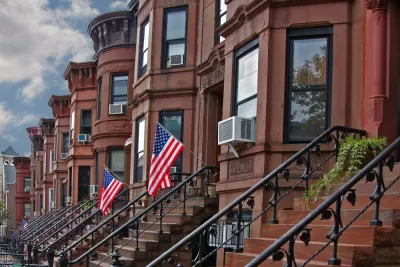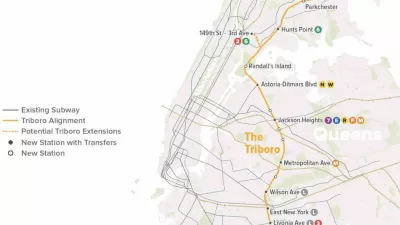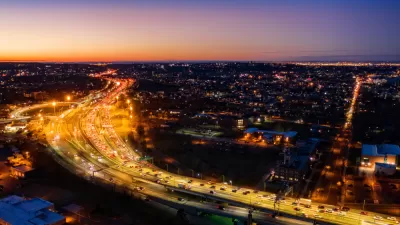The Third Party Transfer program lets the city transfer ownership of delinquent properties, but it unfairly targets communities of color, say critics.

The Third Party Transfer program in New York City allows the city to shift ownership of properties with unpaid taxes or utility bills to third-party owners. While the original intent was to preserve fiscally challenged properties as affordable housing, critics say the outcomes have been problematic.
"Several city lawmakers argue that the program has morphed into a 'blunt instrument' that targets communities of color and essentially robs modest landlords of their properties over minuscule debts," writes Caroline Spivack. Most of the properties are located in gentrifying neighborhoods in Brooklyn and the Bronx, and a city council investigation revealed that half of the properties reviewed did not actually meet the program’s criteria.
Critics also note that properties with relatively minimal debt are being included in the program, says Spivack. "This is unaccepted and points to the program’s dire need for reform especially when those who lose their properties after years of pouring labor and resources into the buildings are not compensated despite building values that often far exceeding the debts that are owed to the city, added [Richie] Torres."
FULL STORY: City’s home-seizure program unfairly targets communities of color, pols say

Planetizen Federal Action Tracker
A weekly monitor of how Trump’s orders and actions are impacting planners and planning in America.

DARTSpace Platform Streamlines Dallas TOD Application Process
The Dallas transit agency hopes a shorter permitting timeline will boost transit-oriented development around rail stations.

Congressman Proposes Bill to Rename DC Metro “Trump Train”
The Make Autorail Great Again Act would withhold federal funding to the system until the Washington Metropolitan Area Transit Authority (WMATA), rebrands as the Washington Metropolitan Authority for Greater Access (WMAGA).

Supreme Court Ruling in Pipeline Case Guts Federal Environmental Law
The decision limits the scope of a federal law that mandates extensive environmental impact reviews of energy, infrastructure, and transportation projects.

Texas State Bills to Defund Dallas Transit Die
DART would have seen a 30% service cut, $230M annual losses had the bills survived.

Bikeshare for the Win: Team Pedals to London Cricket Match, Beats Rivals Stuck in Traffic
While their opponents sat in gridlock, England's national cricket team hopped Lime bikes, riding to a 3-0 victory.
Urban Design for Planners 1: Software Tools
This six-course series explores essential urban design concepts using open source software and equips planners with the tools they need to participate fully in the urban design process.
Planning for Universal Design
Learn the tools for implementing Universal Design in planning regulations.
Roanoke Valley-Alleghany Regional Commission
City of Mt Shasta
City of Camden Redevelopment Agency
City of Astoria
Transportation Research & Education Center (TREC) at Portland State University
US High Speed Rail Association
City of Camden Redevelopment Agency
Municipality of Princeton (NJ)





























